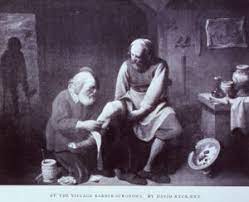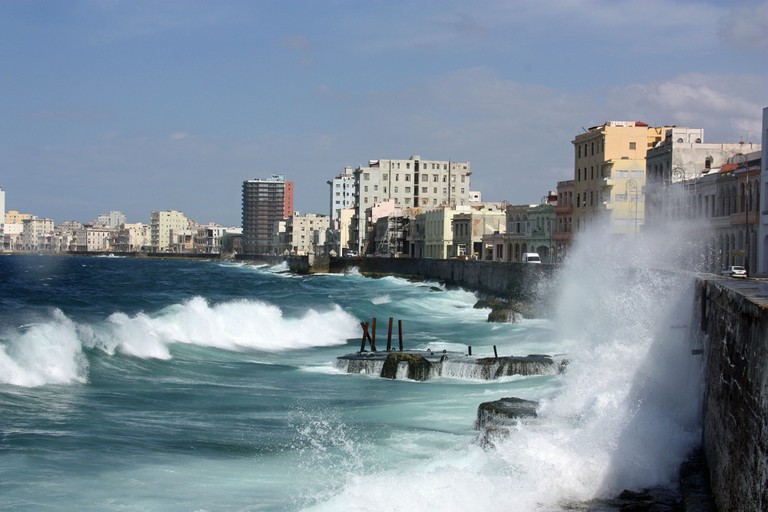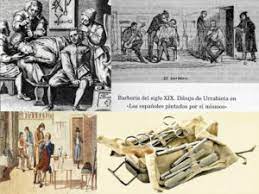ERNESTO LECUONA, ONE OF THE GREATEST CUBAN COMPOSERS OF ALL TIME. VIDEOS
Ernesto Lecuona y Casado (Spanish pronunciation: [eɾˈnesto leˈkwona]; was a Cuban composer and pianist of worldwide fame. He composed over six hundred pieces, mostly in the Cuban vein, and was a pianist of exceptional skill.
Lecuona was born in Guanabacoa, Havana, Cuba, the Kingdom of Spain on August 7, 1896, his father was Canarian and his mother was Cuban. He started studying piano at the age of five, under his sister Ernestina Lecuona, a famed composer in her own right. As a child prodigy, he composed his first song at the age of 11. He later studied at the Peyrellade Conservatoire under Antonio Saavedra and the famous Joaquín Nin. Lecuona graduated from the National Conservatory of Havana with a Gold Medal for interpretation when he was sixteen. He performed outside of Cuba at the Aeolian Hall (New York) in 1916.
He first traveled to Spain in 1924 on a concert tour with violinist Marta de la Torre; his successful piano recitals in 1928 at Paris coincided with a rise in interest in Cuban music. He was a prolific composer of songs and music for stage and film. His works consisted of zarzuela, Afro-Cuban and Cuban rhythms, suites, and many songs which are still very famous. They include Siboney (Canto Siboney), Malagueña and The Breeze And I (Andalucía). In 1942, his great hit, Always in my heart (Siempre en mi Corazon) was nominated for an Oscar for Best Song; however, it lost to White Christmas.
VIDEOS – ERNESTO LECUONA PLAYS
Lecuona was a master of the symphonic form and conducted the Symphonic Orchestra, employing soloists including Cuban pianist and composer Carmelina Delfin. The Orchestra performed in the Cuban Liberation Day Concert at Carnegie Hall on October 10, 1943. The concert included the world premiere of Lecuona’s Black Rhapsody. Lecuona gave help and the use of his name to the popular touring group, the Lecuona Cuban Boys, though he did not play as a member of the band. He did sometimes play piano solos as the first item on the bill.
In 1960, thoroughly unhappy with Castro’s new régime, Lecuona moved to Tampa. Lecuona lived his final years in the US. He died 3 years later at Santa Cruz de Tenerife at age 68, and is interred at Gate of Heaven Cemetery in Hawthorne, New York; his will instructs that his remains be repatriated once the current régime runs its course. A great deal of Lecuona’s music was first introduced to mass American audiences by Desi Arnaz, a fellow Cuban and Lucille Ball’s spouse.
Lecuona’s talent for composition has influenced the Latin American world in a way quite similar to George Gershwin in the United States, in his case raising Cuban music to classical status.
Lecuona was a composer with a prodigious melodic gift. There is nothing quite like a Lecuona song and the composer wrote 406 of them. Many of these great melodies were adapted, arranged, and rearranged over the years for various instrumental and vocal combinations both by Lecuona and many others. Siboney , Siempre En Mi Corazon, Dame de tus Rosas, and Noche Azul are among the most famous. This website now has a wonderful sheet music collection of songs. Click on the link to go to the covers page. To obtain a song, e-mail the webmaster. Throughout much of his life, Lecuona was extremely active in the musical theatres of Cuba, Spain, and Latin America as composer, conductor, and pianist.
A prolific theatre composer, he wrote zarzuelas, operettas, theatre reviews, ballets, and an opera. Today, he is remembered principally for his great zarzuelas. The most famous ones, still performed, are Maria La O, El Cafetal, and Rosa La China. Lecuona’s most ambitious theatre work was the opera, El Sombrero de Yarey, which he worked on it for several years but, to this day, remains unperformed. A reason for this, unfortunately, is that much of the opera has been lost and only portions remain; the complete score has not been seen since the composer’s death of a heart attack in the town of Santa Cruz de Tenerife on November 29, 1963, where he was trying to recuperate from a lung ailment. He was interred at Gate of Heaven Cemetery in Hawthorne, New York, but his will instructs that his remains be repatriated once the current Cuban régime runs its course.
Lecuona’s piano music is an important and very significant contribution to 20th-century music. In all, the composer wrote 176 pieces for piano solo. Among the most famous are the six which comprise the Andalucia Suite. They are Cordoba, Andaluza, Alhambra, Gitanerias, Guadalquivir and Malagueña . Other well-known works are Ante El Escorial, Zambra Gitana, Aragonesa, Granada, San Francisco El Grande, Aragon and La Habanera . There are many more, and all of them are being recorded by Thomas Tirino for BIS Records.
Lecuona was included as a character in the novel The Island of Eternal Love, by Miami-based Cuban writer Daína Chaviano, together with other important names in Cuban music.
ERNESTO LECUONA, UNO DE LOS MEJORES COMPOSITORES CUBANOS DE TODOS LOS TIEMPOS. VIDEOS
Ernesto Lecuona y Casado fue un compositor y pianista cubano de fama mundial. Compuso más de seiscientas piezas, la mayoría en la vena cubana, y fue un pianista de habilidad excepcional.
Lecuona nació en Guanabacoa, La Habana, Cuba, Reino de España el 7 de agosto de 1896, su padre era canario y su madre era cubana.
Comenzó a estudiar piano a la edad de cinco años, con su hermana Ernestina Lecuona, una afamada compositora por derecho propio. De niño prodigio compuso su primera canción a los 11 años. Posteriormente estudió en el Conservatorio de Peyrellade con Antonio Saavedra y el célebre Joaquín Nin. Lecuona se graduó del Conservatorio Nacional de La Habana con Medalla de Oro en interpretación a los dieciséis años. Actuó fuera de Cuba en el Aeolian Hall (Nueva York) en 1916.
Viajó por primera vez a España en 1924 en una gira de conciertos con la violinista Marta de la Torre; sus exitosos recitales de piano en 1928 en París coincidieron con un aumento del interés por la música cubana. Fue un prolífico compositor de canciones y música para teatro y cine. Sus obras consistieron en zarzuela, ritmos afrocubanos y cubanos, suites y muchas canciones que aún son muy famosas. Entre ellos se encuentran Siboney (Canto Siboney), Malagueña y The Breeze And I (Andalucía). En 1942, su gran éxito, Siempre en mi corazón (Siempre en mi corazón) fue nominado al Oscar a la Mejor Canción; sin embargo, perdió ante White Christmas.
Lecuona fue un maestro de la forma sinfónica y dirigió la Orquesta Sinfónica, empleando a solistas como la pianista y compositora cubana Carmelina Delfín. La Orquesta actuó en el Concierto del Día de la Liberación de Cuba en el Carnegie Hall el 10 de octubre de 1943. El concierto incluyó el estreno mundial de Black Rhapsody de Lecuona. Lecuona brindó ayuda y el uso de su nombre al popular grupo de gira Lecuona Cuban Boys, aunque no tocó como integrante de la banda. A veces tocaba solos de piano como primer elemento del cartel.
En 1960, completamente descontento con el nuevo régimen de Castro, Lecuona se mudó a Tampa. Lecuona vivió sus últimos años en Estados Unidos. Murió 3 años después en Santa Cruz de Tenerife a los 68 años, y está enterrado en el cementerio Gate of Heaven en Hawthorne, Nueva York; Su testamento instruye que sus restos sean repatriados una vez que el régimen actual termine su curso. Gran parte de la música de Lecuona fue presentada por primera vez al público masivo estadounidense por Desi Arnaz, una compañera cubana y esposa de Lucille Ball.
El talento compositivo de Lecuona ha influido en el mundo latinoamericano de una manera bastante similar a la de George Gershwin en Estados Unidos, en su caso elevando la música cubana a la categoría clásica.
VIDEOS – DE LECUONA ” RAPSODIA..”
Lecuona fue un compositor con un prodigioso don melódico. No hay nada como una canción de Lecuona y el compositor escribió 406 de ellas. Muchas de estas grandes melodías fueron adaptadas, arregladas y reorganizadas a lo largo de los años para varias combinaciones instrumentales y vocales tanto por Lecuona como por muchos otros. Siboney, Siempre En Mi Corazon, Dame de tus Rosas y Noche Azul se encuentran entre los más famosos. Este sitio web ahora tiene una maravillosa colección de partituras de canciones. Haga clic en el enlace para ir a la página de portadas. Para obtener una canción, envíe un correo electrónico al webmaster. Durante gran parte de su vida, Lecuona fue muy activo en los teatros musicales de Cuba, España y América Latina como compositor, director y pianista.
Compositor de teatro prolífico, escribió zarzuelas, operetas, críticas de teatro, ballets y una ópera. Hoy es recordado principalmente por sus grandes zarzuelas. Las más famosas, aún representadas, son María La O, El Cafetal y Rosa La China. La obra teatral más ambiciosa de Lecuona fue la ópera, El Sombrero de Yarey, en la que trabajó durante varios años pero, hasta el día de hoy, permanece ininterrumpida. Una razón de esto, desafortunadamente, es que gran parte de la ópera se ha perdido y solo quedan partes; la partitura completa no se ha visto desde la muerte del compositor de un infarto en la localidad de Santa Cruz de Tenerife el 29 de noviembre de 1963, donde intentaba recuperarse de una dolencia pulmonar. Fue enterrado en el cementerio Gate of Heaven en Hawthorne, Nueva York, pero su testamento ordena que sus restos sean repatriados una vez que el actual régimen cubano siga su curso.
La música para piano de Lecuona es una contribución importante y muy significativa a la música del siglo XX. En total, el compositor escribió 176 piezas para piano solo. Entre los más famosos se encuentran los seis que componen la Suite Andalucía. Son Córdoba, Andaluza, Alhambra, Gitanerias, Guadalquivir y Malagueña. Otras obras destacadas son Ante El Escorial, Zambra Gitana, Aragonesa, Granada, San Francisco El Grande, Aragón y La Habanera. Hay muchos más, y todos ellos están siendo grabados por Thomas Tirino para BIS Records.
Lecuona fue incluido como personaje en la novela La isla del amor eterno, de la escritora cubana radicada en Miami Daína Chaviano, junto con otros nombres importantes de la música cubana.
Agencies/ Wiki / Lecuona’sBio / Edition /Internet Photos /YouTube /Arnoldo Varona/ VIDEOS – PHOTOS> LA HISTORIA DE CUBA
THE CUBAN HISTORY/ HOLLYWOOD.






















